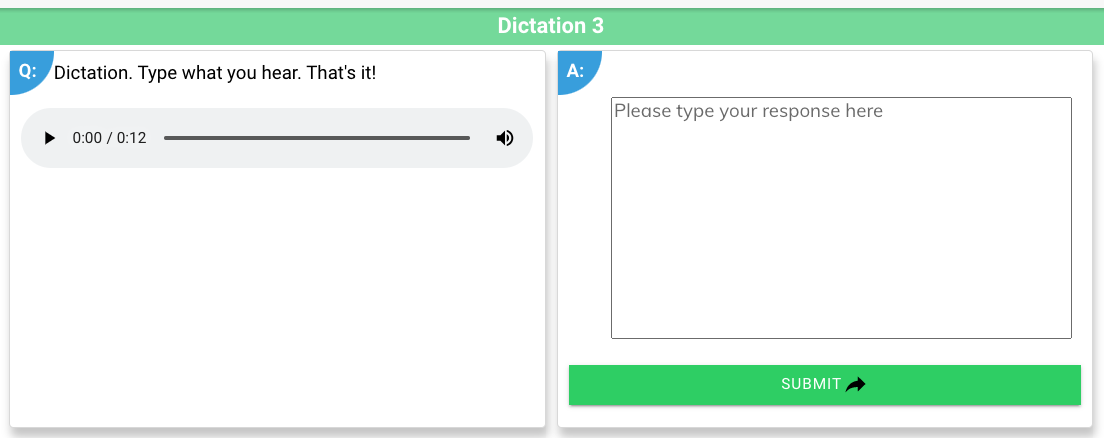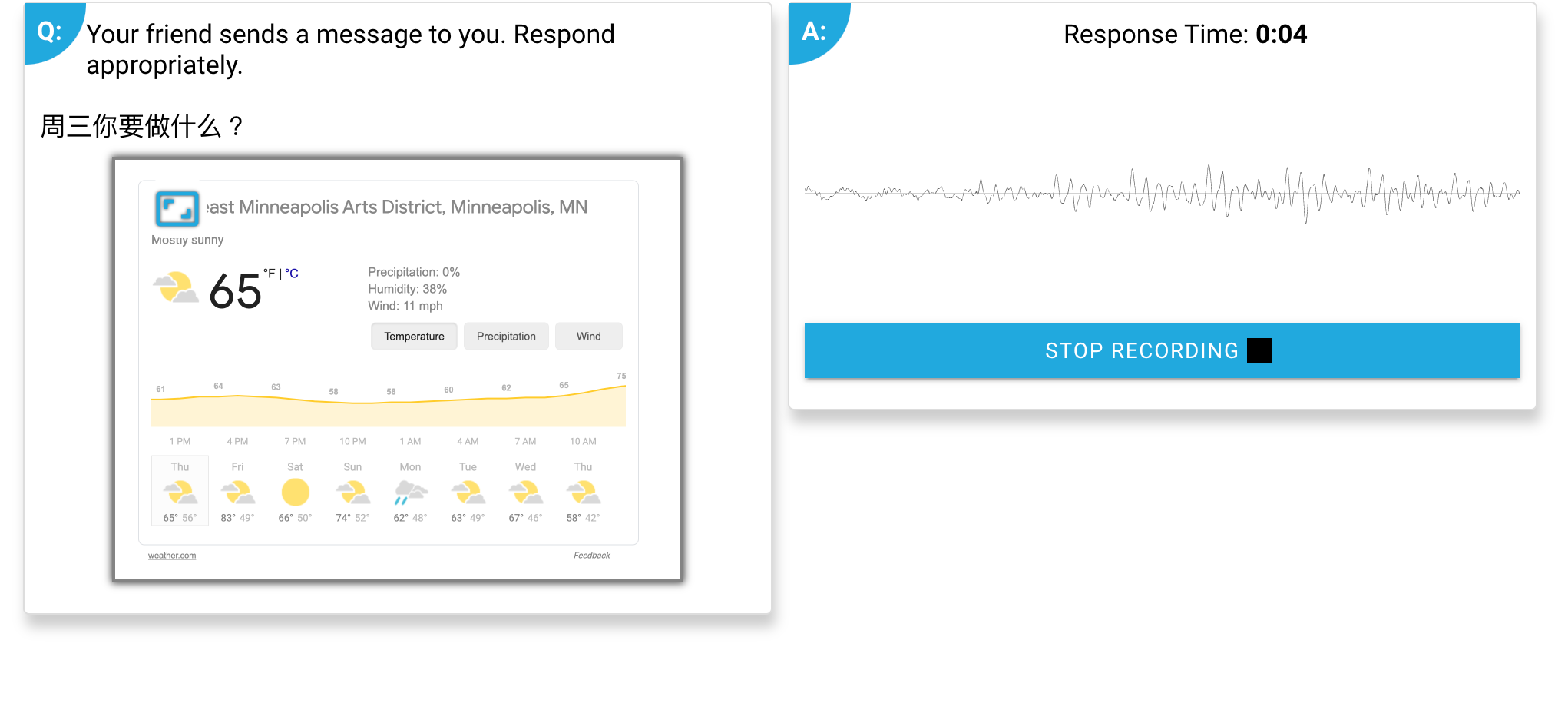Author’s note: for examples of routine language practice and its application on Extempore, scroll down to the “examples” heading. I’ll be the first to tell you that I can be long-winded on the background of some topics, but, in writing this, I wanted to thoroughly lay the framework for the remaining content so as to avoid confusion. So, whether or not you read the intro, I hope you enjoy and can learn something from this.
Also, some of you may recall this topic coming up in our 2021 Summer PD Extravaganza. You can view the webinar in its entirety below.
On an average day in my language classroom, my students know what to expect. They greet me at the door for an ‘entry ticket’ (answering a question, reading some characters from a whiteboard, reciting the password, etc.), after which they’ll enter the classroom with a warm-up either printed out on their desk or projected in the front of the room. At the start of class, I greet them: 大家好!dàjiāhǎo! Hello everyone! They respond appropriately. Then, we say the date together. We review the warm-up and, if necessary, review the homework too. We continue with interactive presentations, and then we have story time. And the class goes on…
Even during the pandemic, I did my best to include these routine parts of the class structure every day. Routines set expectations. Routines help students grow comfortable with the class, and they establish a pattern for how the class will flow and what can be expected. By their nature, routines create consistency. Of course, switching things up and deviating from routines should be encouraged to keep students (and yourself) on their toes, but in a broad sense, routines create stability in any classroom.
Most teachers use basic classroom routines like the ones above, but there is something to be said about routine language practice. So much of learning a new language comes down to two simple factors: exposure (input) and repetition (output). Are students seeing the language as much as possible? Are they producing it as much as possible? Are they mastering high-frequency words and phrases? How do we answer ‘yes’ to these questions, while still preserving a communicative context? Integrating routine language practice makes both of these concepts, exposure and repetition, more feasible to accomplish in the language classroom.
What exactly is routine language practice?
Google ‘routine language practice’ and you’ll be met with a plethora of blog posts and YouTube videos that show how you’re just one podcast or TL streaming series away from reaching fluency. To be clear, these hyper-individualized learning routines are not what I am talking about when I say “routine language practice.” Our students 1) by and large do not possess such extreme levels of self-motivation and, 2) by the same token, are not likely to devote 5-6 hours a day towards learning a language.
On the contrary, the routine language practice that I’m referring to consists of asynchronous activities that expose students to the language at a greater frequency and provide channels for students to use the language in a low-pressure environment. For these to be truly classified as ‘routine,’ students need to do them (in my opinion) at least twice a week, to the point where they anticipate these activities, hence becoming part of the students’ routine.
What makes routine language practice valuable is that it is, well, routine-based, and has the same benefits as many of the classroom routines initially mentioned. Perhaps there’s a better term for this, but ‘routine’ conveys consistency, while also further implying specific numerical occurrences, or specific dates, like every Monday and Wednesday. And yet, this aside lends itself well to an expected question about the topic...
Wait...isn’t this just another form of homework?
If you really want to look at it like that, sure. But if you compare the purpose of homework to the purpose of routine practice, they are widely different, and it’s imperative that students can understand these differences too. Think about how even the name “homework” or “routine practice” can influence a student’s perspective. With the latter, students will likely think, “Oh, this is just our daily practice, our warm-up before the warm-up.” Call it “homework,” and students may respond with, “ugh mr. languageteacher gives us so much homework.” Introducing routine practice will have its hiccups, but again, once it becomes routine, half the work is already done.
Examples of routine language practice
Enough! No more squabbles over semantics! Let’s look at some practical examples. And remember, these practice activities / tasks are designed for students to complete outside of the classroom, prior to class beginning (and preferably, on the day of class, not the day before).
Oral Reading
If you’ve spoken with me before or seen one of my webinars, you have likely heard me laud the research and benefits of using oral reading in the WL classroom. Here I am, lauding it again. I will not ramble on about this, other than to introduce what it is: providing a text for students, and encouraging them to simply read it out loud in the target language. This is great for learning a new script, practicing reading with emotion, getting repetition of new words / phrases, using proper intonation, and a plethora of other benefits, all in a low-pressure environment. For a deeper dive, have a look at this blog or the webinar below (which also features information on dictations, our next topic).

Finish the story (spoken or written)
Part oral reading, part creative output, this is just what it sounds like. Provide a short script or dialogue, and have students first read the story out loud, then finish the story logically. Outside of showcasing their creativity, successful completion also indicates student comprehension of the given text.

Dictations
Another strategy that, similar to oral reading, I have expressed my love for in prior days. Most teachers are familiar with the concept, but sometimes dictations get tossed aside for being an antiquated and irrelevant practice. Quite the contrary! Like oral readings, there is ample research supporting the use of dictations in the world language classroom and their value. For more, read our blog or view the webinar above.

Picture / video response
You’ll notice that the above three strategies represent no frills, basic routine practice. The picture / video response is no exception to this trend. Here, simply provide students with an authentic text (image or video), and have students complete a task in the target language using this text. Consider the authentic options below:
Movie choices (what would you see? What would you recommend? Which has the best actor / actress?)
Restaurant menu (what would you order? What looks scary to you? What dish do you want to know more about?)
Weather forecast (what would you do on Thursday? If you want to go swimming, which day would be best? Which day would you stay home?)
Course catalog (what classes would you take? Which do you want to learn more about?
Vacation options (where would you go? Where have you been? Which place would you recommend to someone?)
Anything that can elicit choices (like those listed above) serves as a great option for this type of response.

Import Picture Response Template
Cultural topic introduction
Why, yes, cultural topics can be used as routine practice! While there’s a good chance you won’t do these in the target language (particularly for novice students), bringing cultural topics front and center can help prepare students for a new topic and get them brainstorming before starting a class discussion. Consider simply showing an image, BRIEF text of an article, or a short video, and then asking students to see, think, wonder. This is an opportunity to introduce a hook to your students on a relevant topic in your target culture.
Considerations when creating routine practice activities
All of these above strategies share certain characteristics that make them ideal for routine practice. To ensure that these activities meet the definition of routine, consider the following when constructing them:
They are simple and low-pressure: Remember, routine practice is used for increased exposure and practice using the language. These activities should not be summative assessment challenge tasks. The goal is for students to grow comfortable and gradually gain confidence. Keep them simple.
They reinforce known language, structures, phrases, etc.: Consider the role that repetition plays in learning a new language. Students need consistent exposure to single words, phrases, idioms, etc. before they can internalize them and develop automaticity. Routine activities are exercises in repetition.
If they preview new language, it is a very small amount: Yes, you can include new language, but tread carefully. With routine activities, limit new lexicall items to no more than two units, i.e. two new words, a new idiom, a new phrase, etc. Be sure that these new bits come up in your planned lesson for that day as well, or else the value of introducing them is lost.
They take <5 minutes to complete: Routine activities are things that students can easily fit into their morning / pre-class schedule. If it takes too long, students won’t do it. They will be much more receptive towards these activities if they know they can be done in just a few minutes (and better yet, on their phones).
Grading and feedback
Outside of “this is just more homework to give my students,” “this is just more homework for me to grade” is also an expected and even reasonable teacher response to creating routine practice. This resonates with me entirely. Who wants to grade hundreds of more student responses on top of everything else a teacher has to do?
So what do we do about grading all of thes? One idea is to have students choose which submissions they want you to score. For example, say your students complete six oral readings in a two-week span. They would then choose two of those six submissions for your feedback and review. On top of this, you could, of course, score all six submissions, but for the sake of your sanity, only give feedback on a select few. Allowing your students to choose those submissions advocates for learner autonomy and students taking ownership of and pride in their work.
Part of assigning routine practice to students involves accepting that, just like homework, not all students will do it. That’s simply a fact of teaching. At the same time though, those who make these part of their routines will reap the benefits.
Routine Practice on Extempore
Oral readings, cultural reflections, picture responses, dictations, finish the story: all of these (and other) routine practice activities can be created, completed, and scored on Extempore. The links include above are for you to directly import these templates to your account. Make tweaks, add media, edit these however you like. Enjoy!


